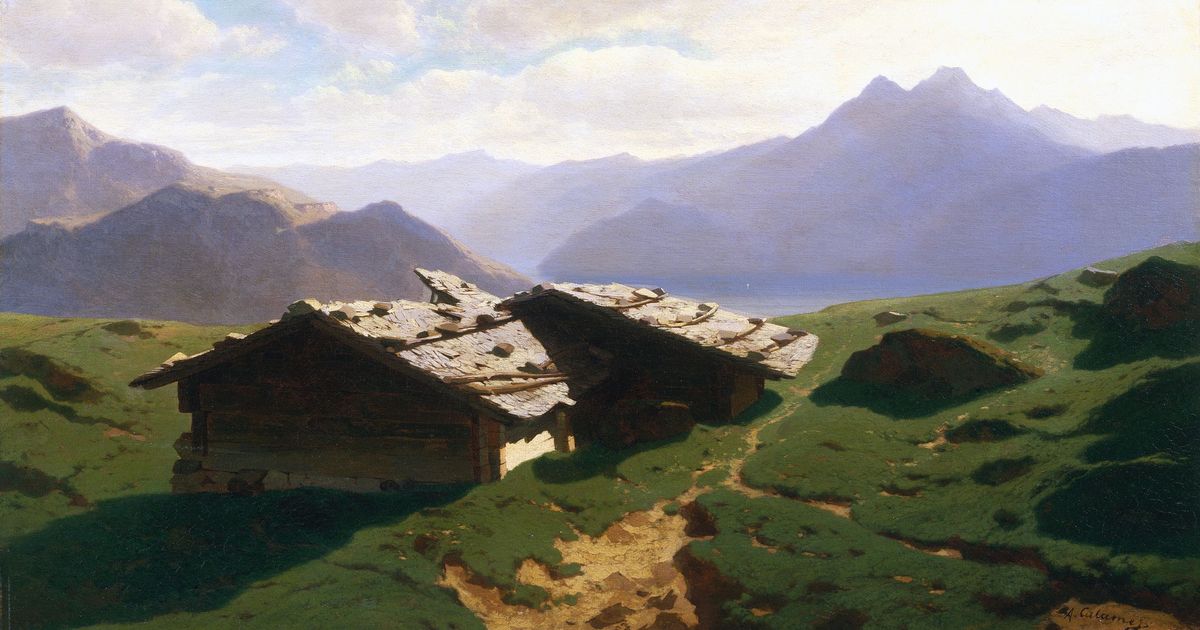
London’s National Gallery has just acquired a painting that once formed part of Hitler’s Führermuseum, The Art Newspaper can report. Following detailed provenance research, the gallery is now convinced that the landscape by the Swiss artist Alexandre Calame has been legitimately acquired, since there have been no claims from any pre-Nazi-era owner. The acquisition will go on display today.
Calame’s Chalets at Rigi (1861) was bought at Christie’s in 1996 by Asbjørn Lunde (1927-2017), a New York lawyer with Norwegian parents. He bequeathed it to the museum through the American Friends of the National Gallery.
Calame was the most important 19th-century Swiss painter of the Alps. Many of his landscapes are of the area around Lake Lucerne, which is overlooked by Mount Rigi.
Nothing is known of the provenance of Chalets at Rigi before July 1943, when it was recorded at the Galerie Maria Gillhausen in Munich. The National Gallery’s research concluded that Gillhausen was “an extremely problematic figure”, who is known to have acted for the Nazi regime. Where she acquired the work by Calame remains untraced, but it could well have come from a Jewish victim.
In July 1943 Gillhausen sold the work to another Munich dealer, Maria Almas-Dietrich, who eventually bought more than a thousand paintings for Hitler’s projected Führermuseum in Linz (that was never built). A photograph of Chalets at Rigi was subsequently included in an album of Hitler’s collection. Initially the work was stored at the Nazi’s Führerbau in Munich and in 1944, or early 1945, it was moved for safekeeping to the salt mine of Altaussee in Austria.
Chalets at Rigi was recovered by US troops in the salt mine and returned to Munich in October 1945 to the Central Collecting Point set up by the Allies to handle displaced art. Ownership then passed to the Bavarian government and later to the Austrian authorities, when it went to Salzburg. No one claimed the Calame work and in 1966 it was moved into storage at the former Carthusian monastery in Mauerbach, outside of Vienna. In 1979 the painting was deposited at the Kunsthistorisches Museum in Vienna.
In 1985 the Austrian authorities decided that unclaimed artworks should be sold at auction, with the proceeds going to benefit victims of the Holocaust. Christie’s was mandated in 1996 to hold a sale of just over a thousand works, including Chalets at Rigi. The painting, then attributed to “a follower” of Calame, sold for the equivalent of £5,700 and was bought by Lunde. He offered it on long-term loan to the National Gallery in 2011.
The gallery’s acquisition policy states that it has to be “certain that it will have good title”. In particular, it needs to ensure that “due diligence [has] been done with regard to any possible restitution claims if the history of the painting between 1933 and 1945 is in any way unclear”. A gallery spokesman says that with Chalets at Rigi the museum staff “have exercised due diligence in satisfying ourselves that we have good title”.
The work’s provenance from 1933 to 1943 is totally unknown. Its acquisition for the Führermuseum suggests that it is very possible that the picture was looted or acquired in a forced sale from a Jewish victim. The fact that no claim has been made means it is possible that the family perished in the Holocaust.
Had the pre-war owner survived, they would have had decades to make a claim before the 1996 auction, but it is still possible that publicity about the National Gallery’s acquisition could alert a descendant. Any claim would probably be referred to the UK’s Spoliation Advisory Panel, an independent body established by the government. If the panel then recommended restitution, this would almost certainly be accepted by the gallery.
Although Chalets at Rigi was only attributed to a follower of Calame at the Christie’s auction, research at the National Gallery has upgraded it to a full autograph work by the artist. This morning the Calame painting goes on display in gallery 45—having survived its turbulent 20th-century history.
Source link : https://www.theartnewspaper.com/news/national-gallery-london-nazi-hitler-acquisition












